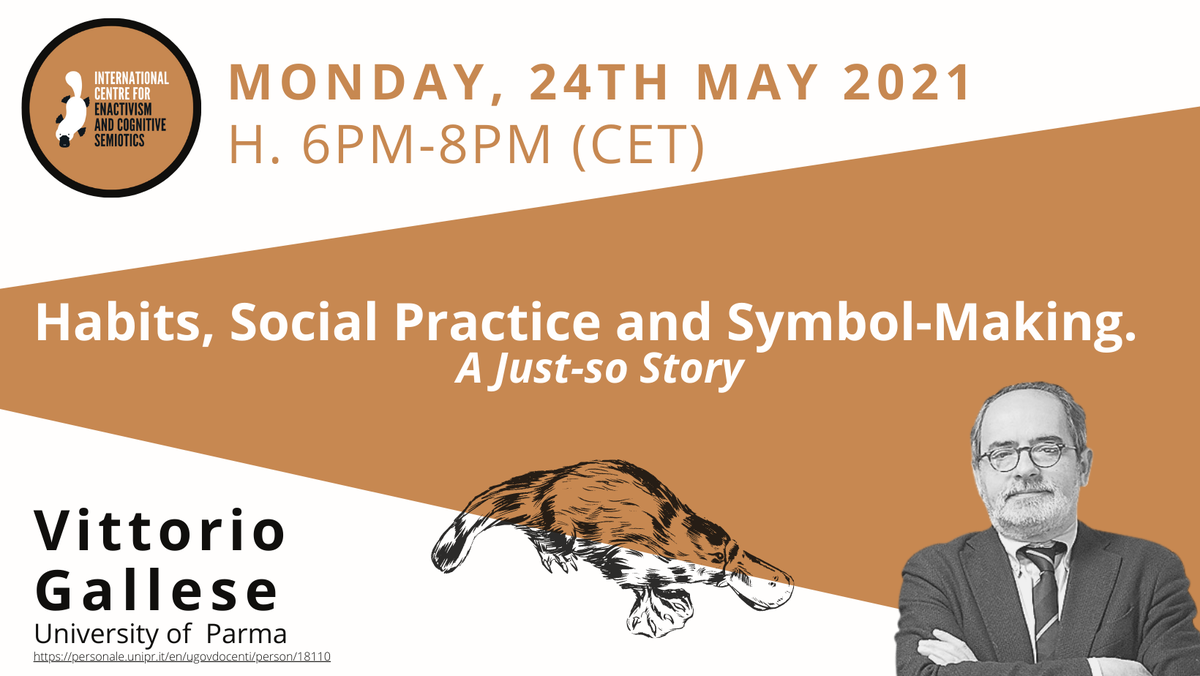Vittorio Gallese, “Habits, Social Practices and Symbol-Making. A Just-so Story”
Sixth workshop in the series organised by the International centre for enactivism and cognitive semiotics in collaboration with the Knowledge and Cognition research centre.

-
Date: 24 MAY 2021 from 18:00 to 20:00
-
Type: International Centre for Enactivism and Cognitive Semiotics

Capitalizing upon Pragmatism, Pierre Bourdieu and Practice Theory, the relationship between body, habit, practice, rituals and its bearing on the creation of symbolic objects and cultural artifacts is analyzed from a neuro-pragmatist approach, which emphasizes the procedural and implicit forms of human cognition. The suggested gradual transition from tool-making to symbol-making, grants the following: 1) It shows that utilitarian and symbolic behavior are both chapters of the same cognitive technology trajectory; 2) It doesn’t require one to assume that symbol- making is the late externalization of a previously existing inner symbolic thought, because symbolic thought and symbol-making are the co-constructive outcome of the development of shared performative practices and habits; 3) It is fully compatible with the neurobiological characterization of human relational potentialities as instantiated by embodied simulation. It is proposed that through the repetition, combination and memorization of particular shared behaviors and actions, and their mimetic ritualization, the social group infuses new cultural meanings into reused bodily performances.
Vittorio Gallese is Full Professor of Psychobiology, Department of Medicine & Surgery, Unit of Neuroscience at University of Parma (Parma, Italy), Adjunct Senior Research Scholar, Dept. of Art History and Archeology at Columbia University (New York, USA), and Honorary Fellow, Institute of Philosophy, School of Advanced Study at University of London (London, UK). He is the Principal Investigator of Laboratory of Social Cognitive Neuroscience at University of Parma. Vittorio Gallese’s research focuses on the cognitive role of the sensory-motor system in non-human primates and humans. His major scientific contribution has consisted in the discovery of mirror neurons, together with his colleagues of Parma, and of the development of a unified model of basic aspects of intersubjectivity: Embodied Simulation Theory. His current research interests include the study of the neural mechanisms at the basis of intentional understanding, empathy, aesthetic experience, and the investigation of the neural bases of Autism and Schizophrenia.
Event is free! Download the flyer and click the platypus to join the meeting!